Custom- Wn23 NS122
ATI Custom- Wn23 NS122
Total Questions : 75
Showing 10 questions Sign up for moreThe nurse is talking with the caregiver of a 13-year-old diagnosed with scoliosis.
The child has come to the clinic to be fitted with a brace to begin her treatment.
The child appears upset and angry and states, "I hate this brace; I hate it already." In an effort to support this child, which statement would be the most appropriate for the nurse to make to this child's caregiver?
Explanation
Allowing the child to choose an article or two of clothing that she can wear with the brace can help her feel more confident and in control of her appearance.
This can help her feel better about wearing the brace and improve her overall attitude toward the treatment.
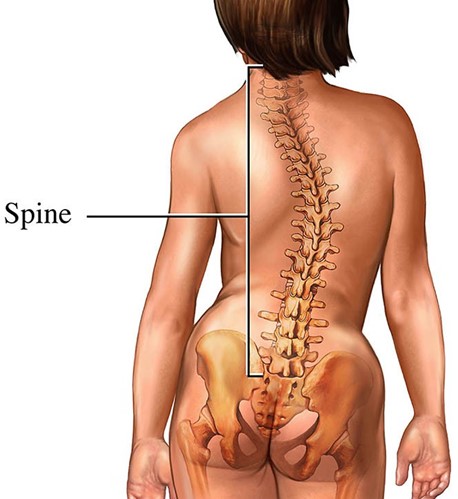
Choice B is not the best answer because it focuses on the long-term benefits of the treatment without addressing the child’s immediate concerns and emotions.
Choice C is not the best answer because it suggests that the child should be left alone to deal with her emotions, which may not be helpful in this situation.
Choice D is not the best answer because it suggests comparing the child’s situation to others who are sicker, which may not be helpful or appropriate.
A nurse is reinforcing teaching with the mother of a 2-month-old infant whose provider applied a Pavlik harness 1 week earlier for the treatment of developmental hip dysplasia.
Which of the following statements by the mother indicates an understanding of the teaching?
Explanation
Checking the baby’s skin three times each day can help the mother monitor for any skin irritation or breakdown caused by the harness.
This can help prevent complications and ensure that the harness is being used safely and effectively.
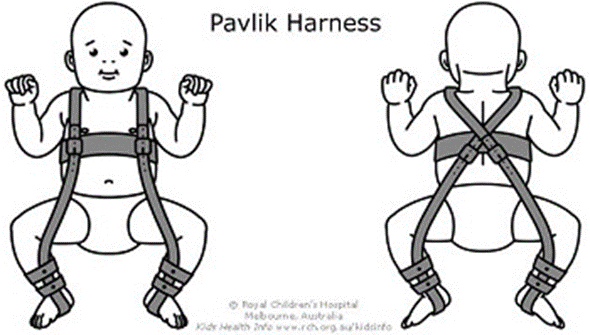
Choice A is not the best answer because the mother should not adjust the harness straps on her own.
This should be done by a healthcare provider to ensure that the harness is properly fitted.
Choice B is not the best answer because the diaper should be placed under the harness, not over it.
Choice C is not the best answer because massaging lotion on the skin around the harness clasps may not be necessary and could potentially cause skin irritation.
The nurse is teaching family members of a child newly diagnosed with muscular dystrophy about early signs.
The nurse knows that teaching was successful when a parent states that which of the following signs may indicate the condition early?
Explanation
Difficulty climbing stairs is an early sign of muscular dystrophy.
This is because the condition causes progressive muscle weakness, which can make it difficult for the child to perform physical activities that require muscle strength.

Choice A is not the best answer because high fevers and tiredness are not specific to muscular dystrophy and can be caused by many other conditions.
Choice B is not the best answer because muscular dystrophy causes muscle weakness, not increased muscle strength.
Choice C is not the best answer because respiratory infections and obesity are not specific to muscular dystrophy and can be caused by many other conditions.
An infant suffered from a fracture of the humerus and requires traction that uses pins, wires, and tongs.
What type of traction is this?
Explanation
Skeletal traction is a type of traction that uses pins, wires, or tongs to apply a pulling force directly to the bone.
This can help align and stabilize a fracture while it heals.
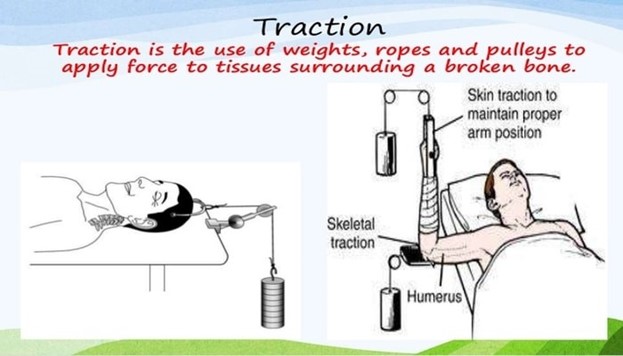
Choice B is not the best answer because muscle traction is not a type of traction.
Choice C is not the best answer because joint traction is not a type of traction.
Choice D is not the best answer because skin traction uses adhesive strips or elastic bandages to apply a pulling force to the skin, rather than directly to the bone.
The nurse caring for a child who has been put into a leg cast must be on alert for signs of nerve and muscle damage.
Which symptom might be an early warning signal that the child has developed compartment syndrome?
Explanation
Compartment syndrome is a condition where increased pressure within a muscle compartment causes muscle and nerve damage along with pain.
One of the symptoms of compartment syndrome is severe pain that increases with the stretching of muscles.
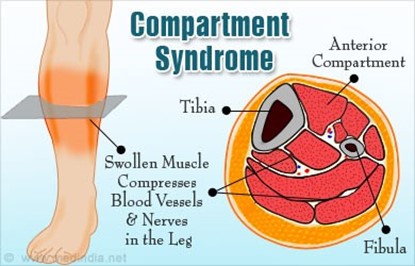
Choice A is not correct because blue-looking nail beds on the toes are not a symptom of compartment syndrome.
Choice B is not correct because a weak femoral pulse is not a symptom of compartment syndrome.
Choice C is not correct because the inability to plantarflex the foot is not a symptom of compartment syndrome.
The nurse is doing neurovascular checks on a child who has had a cast applied to treat a fracture.
The nurse observes for diminished or absent sensation and numbness or tingling. In doing this, the nurse is monitoring which symptom?
Explanation
Paresthesia refers to an abnormal sensation of the skin, such as numbness, tingling, or burning.
When the nurse observes for diminished or absent sensation and numbness or tingling, they are monitoring for paresthesia.

Choice A is not correct because pain is not the symptom being monitored in this case.
Choice B is not correct because paralysis is not the symptom being monitored in this case.
Choice D is not correct because pallor refers to the paleness of the skin and is not the symptom being monitored in this case.
The nurse is monitoring a client who is 3 hours postpartum. On assessment, the nurse notes a temperature of 102.4°F.
Which action should the nurse prioritize?
Explanation
A postpartum fever is defined as a temperature greater than 100.4 degrees F (38.0 degrees C) on at least two occasions.
These fevers cannot be ignored as they can represent serious infections. The first task is to identify the source.
Choice A is not correct because continuing to monitor for another hour may delay necessary treatment.
Choice B is not correct because administering an antipyretic may only treat the symptom and not address the underlying cause of the fever.
Choice C is not correct because assisting the client in ambulation does not address the underlying cause of the fever.
A nurse is assisting in the care of a client who is in the second stage of labor.
Which of the following findings should the nurse report to the provider?
Explanation
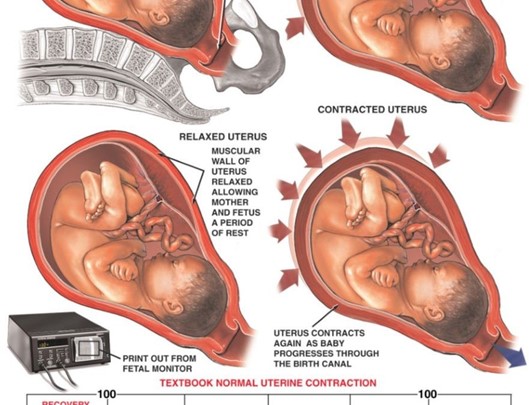
This is a sign of uterine hyperstimulation, which can cause fetal distress and excessive bleeding12.
The nurse should report this finding to the provider and monitor the fetal heart rate and maternal vital signs.
Choice B.
Early decelerations in the FHR are incorrect, as this is a normal finding during the second stage of labor, indicating head compression.
Choice C.
Pelvic pressure with contractions is incorrect, as this is an expected finding during the second stage of labor, indicating that the baby is descending through the birth canal.
Choice D.
Bloody show from the vagina is incorrect, as this is also an expected finding during the second stage of labor, indicating cervical dilation and effacement13.
Therefore, choice A is the best answer.
A nurse is collecting data on an adolescent client who has attention deficit hyperactivity disorder (ADHD).
Which of the following manifestations should the nurse expect to find?
Explanation
ADHD primarily causes symptoms related to inattention, hyperactivity-impulsivity, or a combination of both.
With ADHD, someone may experience difficulties paying attention and staying organized.
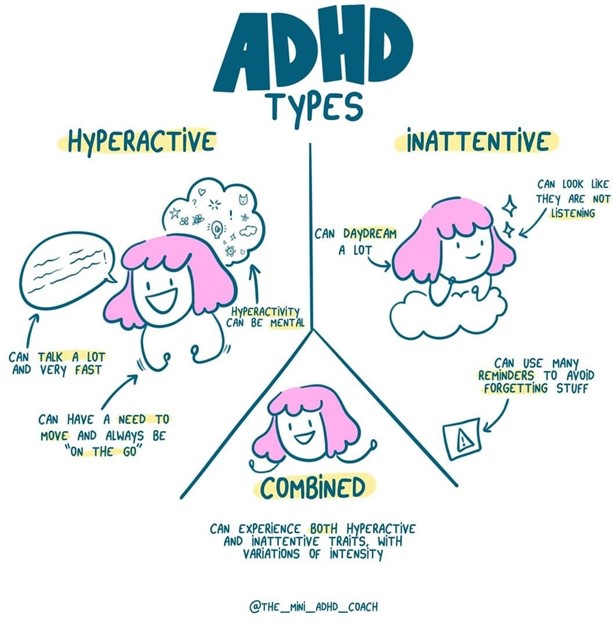
Choice A is not correct because difficulty in acquiring reading skills is not a specific symptom of ADHD.
Choice B is not correct because difficulty using words in context is not a specific symptom of ADHD.
Choice D is not correct because difficulty performing self-grooming activities is not a specific symptom of ADHD.
A pregnant woman is experiencing nausea in the early morning.
What recommendations would the nurse offer to alleviate this symptom?
Explanation
A nurse would recommend having crackers handy at the bedside and eating a few before getting out of bed to alleviate nausea in the early morning for a pregnant woman 1.
Eating foods that don’t aggravate your stomach, such as crackers, can help limit morning sickness.
Choice A is not an answer because eating three well-balanced meals per day and limiting snacks may not help alleviate nausea.
Eating small meals can help limit morning sickness.
Choice C is not an answer because drinking a full glass of fluid at the beginning of each meal may not help alleviate nausea.
Drinking throughout the day, not just when you are thirsty, can help limit morning sickness.
Choice D is not an answer because eating a bland diet and avoiding concentrated sweets may not help alleviate nausea.
Eating foods that don’t aggravate your stomach can help limit morning sickness.
You just viewed 10 questions out of the 75 questions on the ATI Custom- Wn23 NS122 Exam. Subscribe to our Premium Package to obtain access on all the questions and have unlimited access on all Exams. Subscribe Now



